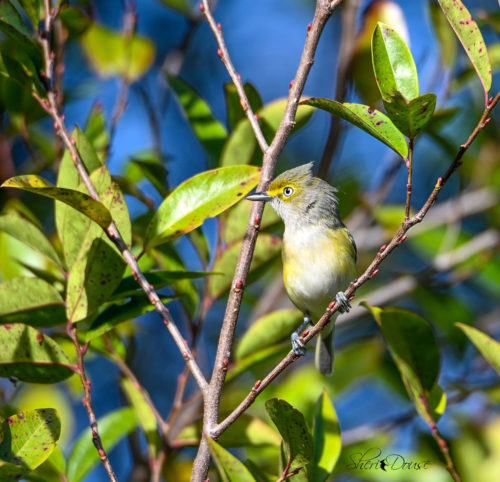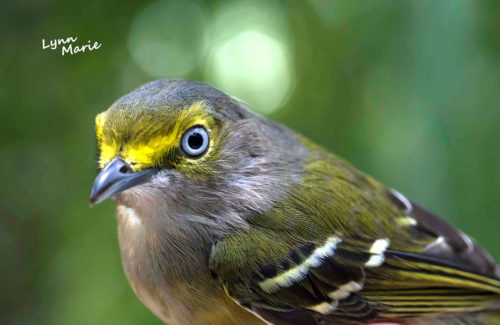The White-eyed vireo (Vireo griseus) is a small songbird that lives in Florida year-round in scrubby areas such as overgrown pastures, forest edges, and mangroves. The diet comprises caterpillars, flies, beetles, moths, butterflies, leafhoppers, lacewings, and spiders. During nonbreeding seasons fruits will be a part of their diet.
Males defend territories from other males by wing flicking, fluffing, sleeking their feathers, and will pecking at the other male. Courtship will start as soon as the female arrives and they will maintain a monogamous bond during the breeding season. The White-eyed vireo will return to the same breeding area year after year, sometimes with different mates.
It takes a mating pair 3-5 days to complete a nest. They will use insect silk and spiderweb to make a shell, then collect stick leaves, bark, plant fibers, rootlets, and bits of paper and add them to the shell. They will use lichens, moss, or leaves outside the nest to camouflage the nest. Usually, 3-5 eggs are laid in a clutch with only 1-2 young being hatched; the eggs are white with some spotting. Incubation is 13-15 days; they can leave the nest after 9-11 days. Both parents contribute to incubating the eggs and feeding the young. However, there are times when the nest can be parasitized by the Brown-headed Cowbirds (Molothrus after), which results in the unknowing parents caring for another bird’s young while their young do not survive.
This species is common with a stabilized population, so it is not of conservation concern.
Photo Credit: Sheri Douse, Lynn Marie


